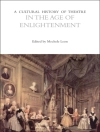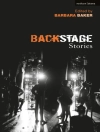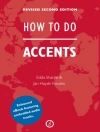Zombies, vampires and mummies are frequent stars of American horror films. But what does their cinematic omnipresence and audiences’ hunger for such films tell us about American views of death? Here, Outi Hakola investigates the ways in which American living-dead films have addressed death through different narrative and rhetorical solutions during the twentieth century. She focuses on films from the 1930s, including Dracula, The Mummy and White Zombie, films of the 1950s and 1960s such as Night of the Living Dead and The Return of Dracula, as well as more recent fare like Bram Stoker’s Dracula, The Mummy and Resident Evil.
Tabella dei contenuti
Chapter 1: Introduction
1.1. Cultural Context: Change of Death-Related Attitudes
1.2. The Material: Living Dead Films
1.3. Theoretical Departure Points: Understanding Textual and Generic Addressing
Chapter 2: Modality of Living Death
2.1. Embodying Death
2.2. Narrating Death
2.3. Symbolizing Death
Chapter 3: Classical Living Dead Films
3.1. Dracula – Horrifying and Unnatural Death
3.2. White Zombie – Distancing and Alienating Death
3.3. The Mummy and Scientific Death
3.4. Idealization of Modern Death
Chapter 4: Undead of the Transitional Era
4.1. Familial and Americanized Vampires
4.2. Mummy – Scientific Control of Natural Death
4.3. Getting Out of Control – Zombies, Violence and Death
4.4. Challenging the Ideals of Modern Death
Chapter 5: Post-Classical Undead
5.1. Mummies and Body Horror
5.2. Mistreatment of Dead – Zombies and Death Industries
5.3. Desire for Self-Expressive Vampires
5.4. Ambiguous Return of Ordinary Death
Chapter 6: Digitalized Living Dead
6.1. The Mummy and Aesthetics of Trivial Death
6.2. Discomforting Position of the Viewer in Zombie Apocalypses
6.3. Vampires and Death as Part of Personal Identity
6.4. Obsessive Interest in Death
Chapter 7: Transforming Traditions of Rhetoric of Death
Filmography
Bibliography
Circa l’autore
Kari Kallioniemi is a researcher, adjunct professor and the leader of the ‘Thatcherism, Popular Culture and the 1980s’ project at the Cultural History department, University of Turku. His research interests focus on the relationships between different notions of nationality, neo-right and popular culture. His recent book on this subject is Englishness, Pop and Post-War Britain (Intellect, 2016). His current project deals with the themes of fascination with fascism in popular culture.












